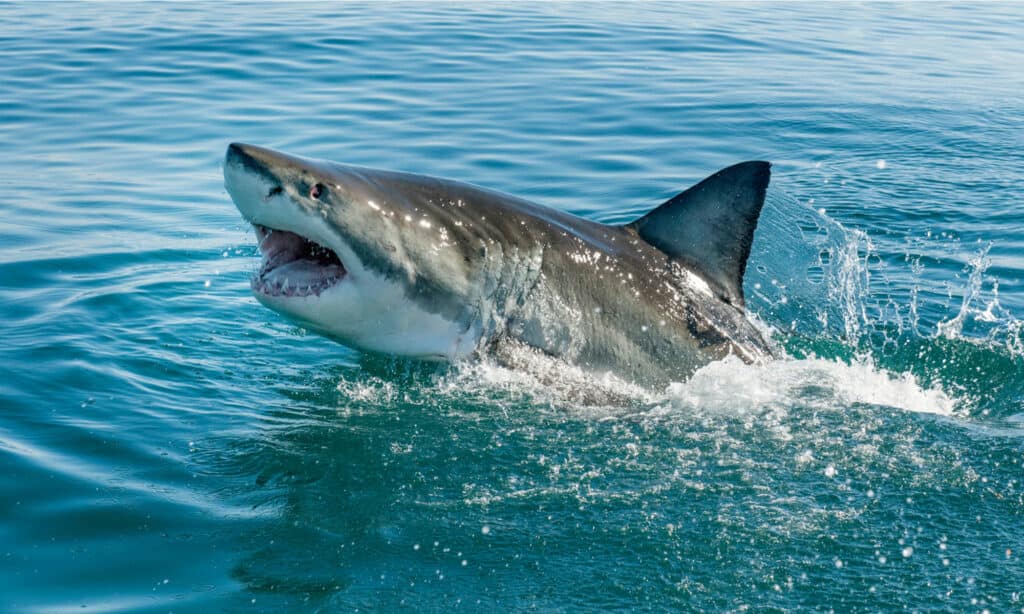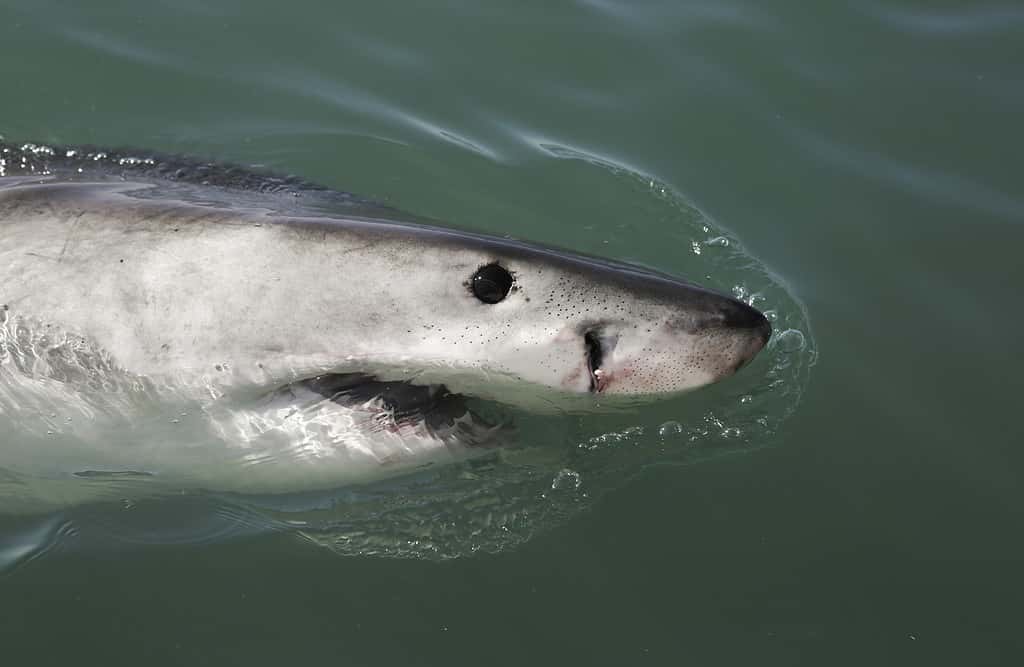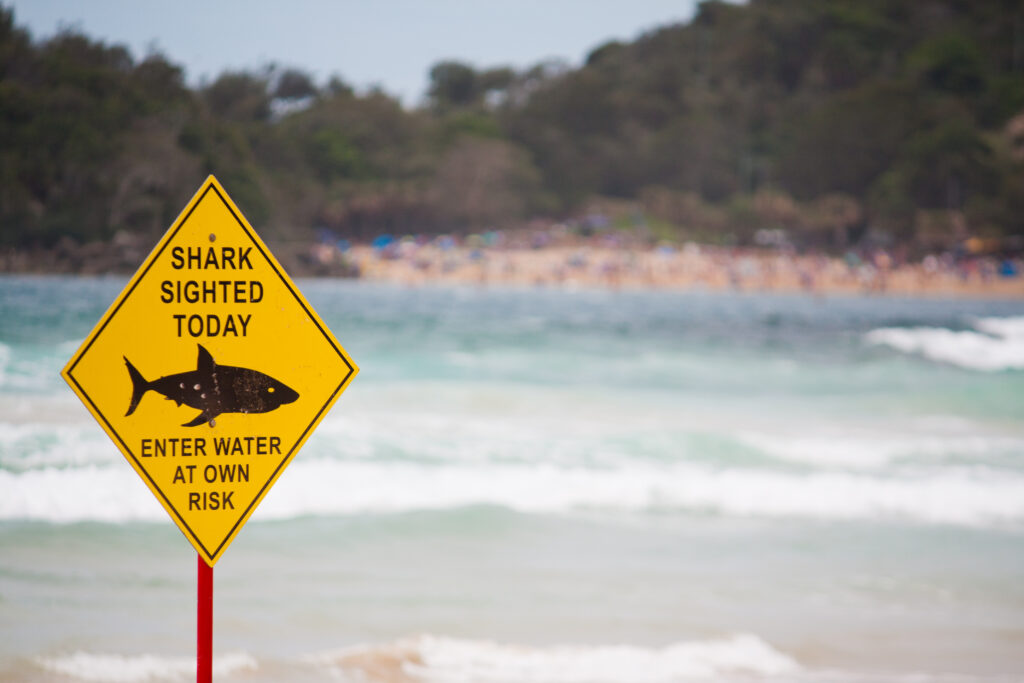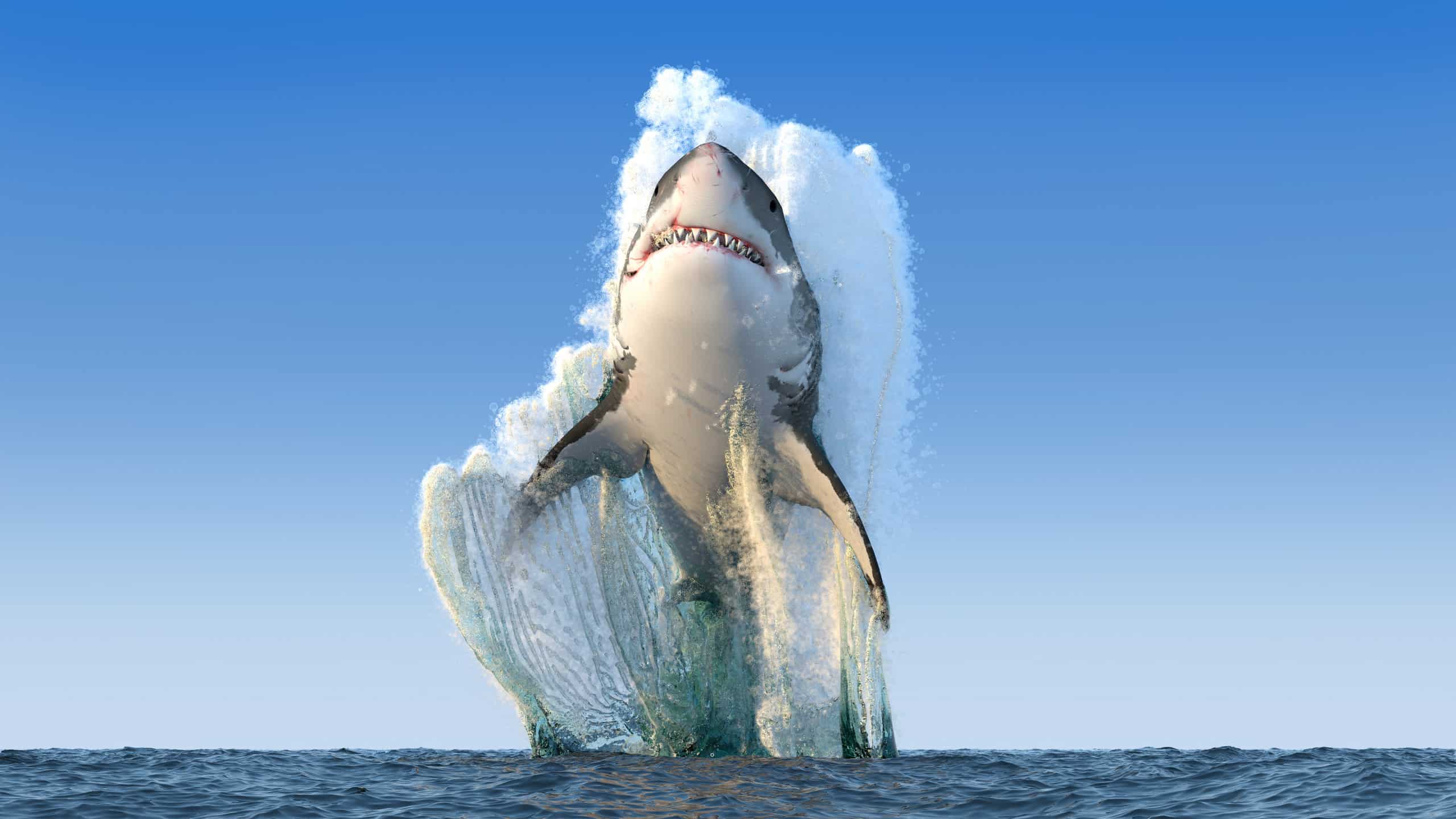California has long been known as a haven for great white sharks (Carcharodon carcharias). These oceanic apex predators are found along the entire length of California’s coast, having been documented in all 19 of California’s coastal counties. But what are the records for the largest great whites ever found off the coast of The Golden State? It’s difficult to say with certainty because large white sharks are elusive and exact measurements are often difficult, if not impossible, to ascertain. But there are a few contenders that are certainly part of the conversation.

The California coast is home to many great white sharks.
©Jayaprasanna T.L/Shutterstock.com
Dr. Paul Kanive’s Encounter
For example, marine biologist Dr. Paul Kanive documented a 19-foot great white shark off the coast of the Farallon Islands in 2018. Dr. Kanive was in a 17-foot research vessel when he observed the giant shark. The girth of this behemoth was close to that of a Volkswagon Beetle! Reflecting on the experience, Dr. Kanive said, “I went full lizard brain. Time seemed to stop, and all I could hear or feel was my own heartbeat. Seeing her was absolutely awe-inspiring.”
The Farallon Islands are a cluster of islands and sea stacks located about 28 miles off California’s main coast. They are officially part of the City and County of San Francisco, but President Theodore Roosevelt designated three of the island groups as a national wildlife refuge in 1909. Today, these uninhabited islands are home to birds and pinnipeds and are often stalked by whales and sharks. The islands are managed by the U.S. Fish and Wildlife Service.

The Farallon Islands off the San Francisco coast are home to a variety of animals, including large sharks.
©iStock.com/LouieBaxter
Steve Bruemmer’s (Much More Violent) Encounter
Steve Bruemmer was swimming off Lovers Point in Pacific Grove, California, on June 22, 2022. That’s when a great white shark bit the 62-year-old.
Bruemmer began screaming for help. A surfer named Heath Braddock was one of the people who heard his cries. Braddock told a local news station, “[Bruemmer] was 300 feet out. A lot of tourists cry wolf and cry out, ‘Shark!’ It’s rarely the case. It’s usually a dolphin. But this guy continued to scream frantically. I saw the pool of blood around him, so I knew it was real.”
Braddock immediately went to help Bruemmer, as did two paddleboarders. Braddock said, “The standup paddleboarders got there 10 seconds before I did… I pulled on his good arm, and they lifted the other arm that had been bitten. His leg wound was the most pronounced. His bone was fully showing. Most of the damage was on his stomach [and his] front side.”
The three pulled Bruemmer to shore as quickly as they could. Undoubtedly their bravery and fast action saved his life. Bruemmer lost a lot of blood but thankfully survived the harrowing ordeal.
While at the hospital, the California Department of Fish and Wildlife conducted a forensic exam of the bites sustained by Bruemmer and concluded it was indeed a great white shark that bit the unsuspecting swimmer. The bite marks were so large that experts believe the shark may have measured 20 feet long. If so, that would make this great white one of the largest in the world.

There are some massive great white sharks in California’s waters!
©Vincent Legrand/Shutterstock.com
Lots of Large Sharks and Lots More Small Sharks
It’s not just massive great whites that are showing up in California, though. Small sharks have been observed in huge numbers recently, especially off the coast of southern California. The juvenile white sharks are often six to eight feet long and are commonly seen within 50 feet of the coast.
This has led researchers to conclude that the waters of southern California have become a great white shark nursery. For a nursery to be confirmed, three factors must be proven.
- There must be evidence that young sharks are found there more often than in other areas.
- These young sharks must remain in the area for an extended period.
- Sharks must use the same area repeatedly for years.
The current evidence seems to corroborate all three points.
Climate change is one of the driving forces thought to be behind the emergence of these California great white nurseries. As the waters of the Pacific warm, the sharks are pushing further north to find cooler waters for nurseries. If the trend continues, great white nurseries may eventually begin showing up in Oregon.

Juvenile great white sharks are showing up in large numbers in Southern California.
©iStock.com/pkphotoscom
Time to Panic?
With the massive great whites in these waters, combined with the juveniles that are now present in huge numbers, California swimmers and surfers appear to be sharing the water with more great whites than ever before. Is this cause for alarm?
California does rank third among U.S. states in terms of shark attacks, but the actual numbers are quite low.
While stories of gruesome and nearly-fatal encounters, such as Bruemmer’s, understandably grab headlines, the reality is the odds of a great white shark attack in California are minuscule.
According to a study by Stanford University, you have a 1-in-17 million chance of being attacked by a shark in California waters. You are more than 1,800 times more likely to drown than to be bitten by a shark.
Still, it’s not impossible, as Steve Bruemmer will readily attest. How can you best protect yourself?

Large numbers of sharks are swimming in California waters, but the risk of attack is still very low.
©iStock.com/mingis
Staying Safe at the Beach
Before heading out for a day at the beach, check local reports. Officials constantly monitor shark activity in California waters.
While at the beach, always be aware of your surroundings. Also, swim with a group. There is clear evidence that a large group of swimmers reduces the likelihood of a shark encounter.
If there is a dead fish or animal in the water, steer clear. That animal could be an easy meal for a shark, and you don’t want to be in the area if that happens.

Swimming with a group is one of the best ways to guard against a shark encounter.
©iStock.com/molchanovdmitry
Why Do Sharks Attack?
Great white sharks generally don’t attack humans in the manner that some believe. It’s typically not an “attack,” at all. A shark bite is almost always a case of mistaken identity.
Great white sharks don’t have great eyesight. When a bite on a human occurs, it’s almost always because the shark mistook the human for a prey animal. When it realizes the human is not the prey it was targeting, the shark often releases and leaves. The consequences can still be devastating, though. And obviously, the great white shark is wild and unpredictable, so it’s impossible to predict what one will do.
What we can do, though, is examine the evidence. There are more great white sharks moving into California waters. The numbers are potentially higher than ever before. However, those increased shark numbers have not led to a rise in shark/human encounters. If humans were on the shark’s preferred menu, it would surely be reflected in a spike in shark attacks in California. That is simply not the case.
The great white shark is the largest predatory fish in the world. There are a lot of juveniles off the California coast. There are also some giant adult sharks. It would be foolish not to be cautious, but that doesn’t mean there is reason to panic.

When a great white shark bites a human, it usually mistakes the human for a prey animal such as a seal.
©iStock.com/USO
Where are Farallon Islands Located on a Map?
Located in the Gulf of the Farallones, off the coast of San Francisco, California, the Farallon Islands, also known as Farallones, comprise a collection of islands and sea stacks.
Here are Farallon Islands on a map:
Thank you for reading! Have some feedback for us? Contact the AZ Animals editorial team.








